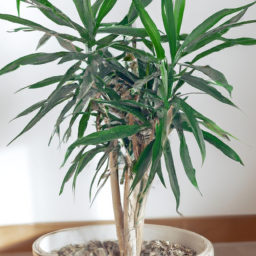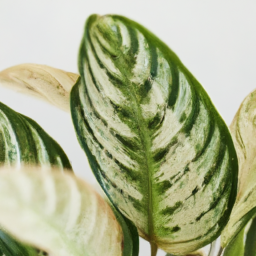
Have you ever wondered if indoor plants are good for your health? Well, the answer might surprise you. Indoor plants have gained popularity in recent years as more people recognize their numerous benefits beyond just adding a touch of green to our homes. From purifying the air we breathe to reducing stress levels, these leafy companions have a lot to offer. In this blog post, we will explore the question, “Is indoor plants good for health?” and delve into the various ways they can positively impact our well-being. So, let’s dig deeper and discover the hidden wonders of indoor plants!
The Benefits of Indoor Plants for Health
Indoor plants not only bring life and beauty to our living spaces but also offer numerous health benefits. From improving air quality to reducing stress levels, these green companions have been proven to enhance our overall well-being. In this article, we will explore the various ways in which indoor plants positively impact our health and provide you with a step-by-step guide on incorporating them into your home or office environment.
Improved Air Quality
One of the primary benefits of indoor plants is their ability to purify the air we breathe. Through a process called photosynthesis, plants absorb carbon dioxide and release oxygen, effectively increasing the oxygen levels in the room. Additionally, plants act as natural air filters, removing harmful toxins and pollutants from the air. This can be particularly beneficial in enclosed spaces with limited ventilation, such as offices or apartments.
Research has shown that certain indoor plants, such as the peace lily, spider plant, and snake plant, are especially effective at removing common indoor pollutants like formaldehyde, benzene, and trichloroethylene. By introducing these plants into your indoor environment, you can significantly improve the air quality and reduce the risk of respiratory issues, allergies, and asthma.
Furthermore, indoor plants can help regulate humidity levels by releasing moisture into the air through a process called transpiration. This can be particularly beneficial during dry winter months when the air tends to become excessively dry due to heating systems.
Reduced Stress and Improved Mental Health
Indoor plants have been found to have a calming effect on our minds and bodies, helping to reduce stress levels and improve mental health. The presence of greenery has been linked to increased feelings of relaxation, tranquility, and overall well-being.
Studies have shown that being around plants can lower blood pressure, reduce heart rate, and decrease the production of stress hormones. This can have a significant impact on our mental and emotional state, promoting a sense of calmness and improving our ability to cope with daily stressors.
In addition to their calming effects, indoor plants can also enhance our cognitive function and productivity. Research has indicated that having plants in the workplace or study environment can improve concentration, memory retention, and creativity. This makes them ideal companions for home offices, classrooms, and any space where mental focus is required.
Enhanced Physical Health
Indoor plants not only benefit our mental health but also contribute to our physical well-being. The presence of plants indoors has been associated with a range of positive physiological effects.
Firstly, plants can help reduce the occurrence of common ailments by increasing humidity levels and reducing dust particles in the air. This can alleviate dry skin, sore throats, and dry coughs, particularly in arid climates or during the winter season.
Moreover, studies have shown that indoor plants can improve our sleep quality. The release of oxygen during the day and the absorption of carbon dioxide at night can create a more balanced and oxygen-rich environment, promoting better sleep patterns and overall restfulness.
Lastly, indoor plants have been linked to faster healing and recovery times for individuals in hospitals or recovering from surgery. The presence of greenery has been found to reduce pain perception, lower blood pressure, and enhance overall well-being, leading to improved patient outcomes.
In conclusion, indoor plants offer a wide range of health benefits, including improved air quality, reduced stress levels, and enhanced physical well-being. By incorporating these green companions into our indoor spaces, we can create a healthier and more harmonious environment. So why not bring some nature indoors and experience the positive effects for yourself?

Indoor Plants: Improving Air Quality and Reducing Stress
Indoor plants have gained popularity not only for their aesthetic appeal but also for their numerous health benefits. These green companions not only add life to your living space but also contribute to improving air quality and reducing stress levels. In this article, we will explore the science behind how indoor plants can positively impact your health and provide you with a step-by-step guide on incorporating them into your indoor environment.
Improving Air Quality
Indoor air pollution is a growing concern in today’s modern world. With the increasing use of synthetic materials and poor ventilation, harmful pollutants can accumulate in our homes and offices, leading to various health issues. Indoor plants act as natural air purifiers by absorbing these pollutants and releasing clean oxygen into the environment.
One of the primary ways indoor plants improve air quality is through a process called photosynthesis. During photosynthesis, plants absorb carbon dioxide and other harmful gases, such as formaldehyde and benzene, and convert them into oxygen. This natural filtration system helps to reduce the concentration of these pollutants in the air, making it healthier for us to breathe.
Furthermore, research has shown that certain indoor plants have specific abilities to remove particular toxins from the air. For example, the Peace Lily is known for its ability to remove formaldehyde, a common indoor pollutant found in cleaning products and furnishings. Spider plants are excellent at removing carbon monoxide and xylene, a solvent used in printing and rubber industries. By strategically placing these plants around your indoor space, you can create a healthier and cleaner environment.
Aside from their air purifying capabilities, indoor plants also release moisture through a process called transpiration. This natural humidification can help combat dry indoor air, which is often associated with respiratory problems and dry skin. By increasing humidity levels, plants can alleviate symptoms such as dry coughs and irritated eyes, promoting overall respiratory health.
Reducing Stress
In today’s fast-paced world, stress has become a common part of our daily lives. Fortunately, indoor plants can play a significant role in reducing stress levels and promoting a sense of calm and relaxation.
Research has shown that simply being in the presence of plants can have a positive impact on our mental well-being. The color green, commonly associated with nature, has a soothing effect on our minds and can help alleviate stress. Indoor plants provide a connection to nature, even in urban environments, allowing us to experience the benefits of nature’s calming influence.
In addition to their visual appeal, indoor plants can also improve acoustics by absorbing background noise. This can create a quieter and more peaceful indoor environment, reducing the stress caused by constant noise pollution.
Furthermore, caring for indoor plants can be a therapeutic activity in itself. Engaging in activities such as watering, pruning, and repotting can help distract our minds from daily worries and provide a sense of purpose and accomplishment. This hands-on interaction with nature can be a form of mindfulness, allowing us to focus on the present moment and reduce stress levels.
Step-by-Step Guide to Incorporating Indoor Plants
Now that we understand the benefits of indoor plants, let’s explore how you can incorporate them into your indoor space:
Step 1: Assess Your Indoor Space
Take a look around your indoor space and identify areas that could benefit from the addition of plants. Consider factors such as lighting conditions, temperature, and available space. Different plants have different requirements, so it’s essential to choose plants that will thrive in your specific environment.
Step 2: Choose the Right Plants
Research different types of indoor plants and select ones that suit your preferences and meet the conditions of your indoor space. Consider factors such as maintenance requirements, size, and the specific benefits you are looking to gain from the plants.
Step 3: Placement and Arrangement
Once you have chosen your plants, decide on their placement within your indoor space. Consider creating clusters of plants to maximize their impact and create a visually appealing display. Place plants near windows to ensure they receive adequate sunlight, but be cautious of direct sunlight that may cause damage.
Step 4: Care and Maintenance
Regularly care for your indoor plants by watering them appropriately, providing necessary nutrients, and monitoring their overall health. Each plant may have specific care requirements, so it’s essential to familiarize yourself with the needs of each plant to ensure their well-being.
Step 5: Enjoy the Benefits
Sit back, relax, and enjoy the numerous benefits that indoor plants bring to your living space. Breathe in the fresh air, take in the calming greenery, and embrace the positive impact they have on your health and well-being.
In conclusion, incorporating indoor plants into your indoor environment can have a significant positive impact on your health. From improving air quality by filtering out pollutants to reducing stress levels and promoting relaxation, these green companions offer a range of benefits. By following the step-by-step guide provided, you can easily bring the beauty and health benefits of indoor plants into your life. So why wait? Start transforming your indoor space today!

How Indoor Plants Can Boost Mental Well-being and Productivity
Indoor plants are not just a beautiful addition to your home or office, they also have numerous benefits for your mental well-being and productivity. Research has shown that having plants indoors can have a positive impact on your mood, reduce stress levels, and increase productivity. In this article, we will explore how indoor plants can boost your mental well-being and help you stay focused and productive.
Reducing Stress and Anxiety
One of the most significant benefits of indoor plants is their ability to reduce stress and anxiety. Studies have shown that being in the presence of plants can lower blood pressure and heart rate, leading to a more relaxed state of mind. The natural green color of plants has a soothing effect on our senses and can help create a calming environment.
Indoor plants also have the ability to improve air quality by filtering out harmful toxins and releasing oxygen. Breathing in fresh, clean air can have a positive impact on our mental well-being and help reduce stress levels. Additionally, the act of caring for plants can be therapeutic and provide a sense of purpose and responsibility, further reducing stress and anxiety.
So, if you often find yourself feeling stressed or anxious, consider bringing some indoor plants into your space. You’ll be amazed at how much of a difference they can make in creating a calm and peaceful atmosphere.
Enhancing Mood and Creativity
Indoor plants can also have a significant impact on your mood and creativity. Research has shown that being surrounded by nature, even in the form of indoor plants, can improve our overall mood and well-being. The presence of plants can evoke positive emotions and create a sense of tranquility.
Furthermore, indoor plants can enhance creativity and problem-solving skills. Studies have found that having plants in the workplace can improve cognitive function and increase productivity. The natural elements of plants can stimulate our brains and boost our ability to think creatively. So, if you’re feeling stuck or in need of inspiration, having some indoor plants nearby can help get those creative juices flowing.
Whether you’re working from home or in an office, incorporating indoor plants into your workspace can have a significant impact on your mood and productivity.
Increasing Productivity and Focus
Indoor plants have been found to increase productivity and focus in various settings. Research has shown that having plants in the workplace can improve concentration and memory retention. The presence of plants can help reduce distractions and create a more peaceful and conducive environment for work.
Furthermore, indoor plants can help reduce fatigue and increase energy levels. The natural beauty of plants can provide a visual break from screens and other electronic devices, allowing our eyes to rest and recharge. This can lead to improved focus and productivity throughout the day.
Additionally, plants can also help absorb background noise, creating a quieter and more peaceful environment. This can be especially beneficial in open office spaces where noise levels can be high and distracting.
So, if you’re looking to boost your productivity and stay focused, consider adding some indoor plants to your workspace. You’ll be amazed at how they can transform your work environment and help you stay on top of your tasks.
In conclusion, indoor plants have numerous benefits for our mental well-being and productivity. They can reduce stress and anxiety, enhance mood and creativity, and increase productivity and focus. So, whether you’re working from home or in an office, consider incorporating indoor plants into your space. Not only will they add beauty and life to your environment, but they will also have a positive impact on your overall well-being.
Crisp Recap
Indoor plants have become increasingly popular in recent years, not just for their aesthetic appeal, but also for their potential health benefits. Many studies have shown that indoor plants can have a positive impact on our well-being. Firstly, plants are known to improve air quality by absorbing carbon dioxide and releasing oxygen through photosynthesis. This process can help reduce the levels of harmful pollutants in our homes, such as formaldehyde and benzene, which are often found in furniture and cleaning products. By improving air quality, indoor plants can help reduce the risk of respiratory problems and allergies.
Moreover, indoor plants have been found to have a calming effect on our mental health. The presence of plants in our environment has been linked to reduced stress levels and improved mood. The color green, which is abundant in plants, has been associated with feelings of relaxation and tranquility. Additionally, caring for indoor plants can provide a sense of purpose and responsibility, which can boost our overall well-being. Whether it’s watering them, pruning, or simply admiring their beauty, having plants indoors can bring a sense of connection with nature, even in urban settings. So, besides adding a touch of nature to our homes, indoor plants can also contribute to our physical and mental health.
Let me leave you with some FAQs:
Q1: Are indoor plants good for health?
A1: Absolutely! Indoor plants not only enhance the aesthetics of your living space but also offer numerous health benefits. They help purify the air by removing harmful toxins and releasing oxygen. Additionally, plants can increase humidity levels, reduce stress, and boost your mood.
Q2: How do indoor plants improve air quality?
A2: Indoor plants have the remarkable ability to filter and purify the air. Through a process called photosynthesis, plants absorb carbon dioxide and release oxygen. Moreover, they can eliminate harmful pollutants such as formaldehyde, benzene, and trichloroethylene from the air, creating a healthier environment to breathe in.
Q3: Can indoor plants reduce stress and improve mood?
A3: Yes, they can! Research suggests that being around indoor plants can help reduce stress levels and improve overall mood. The presence of greenery indoors has a calming effect on the mind, promoting relaxation and a sense of well-being. Indoor plants can also create a more peaceful and inviting atmosphere.
Q4: Do indoor plants require a lot of maintenance?
A4: Not necessarily. While some indoor plants may require more care than others, there are plenty of low-maintenance options available. If you’re new to plant care or have a busy lifestyle, you can choose plants that are known for their resilience and ability to thrive in various conditions. It’s important to find the right balance of light, water, and occasional fertilization to ensure your indoor plants stay healthy.
Q5: Can indoor plants help improve productivity?
A5: Absolutely! Indoor plants have been shown to enhance productivity and concentration. Studies have found that having plants in the workplace or study area can improve focus, creativity, and overall job satisfaction. The presence of greenery can also help reduce mental fatigue and increase feelings of positivity, resulting in a more productive and enjoyable environment.
Dr. Olivia Green is a botanist with over two decades of experience in indoor plant cultivation. She holds a Ph.D. in Plant Biology and has dedicated her career to researching plant behavior in controlled environments. Dr. Green is passionate about helping plant enthusiasts master the art of indoor gardening through her extensive knowledge and practical insights.


